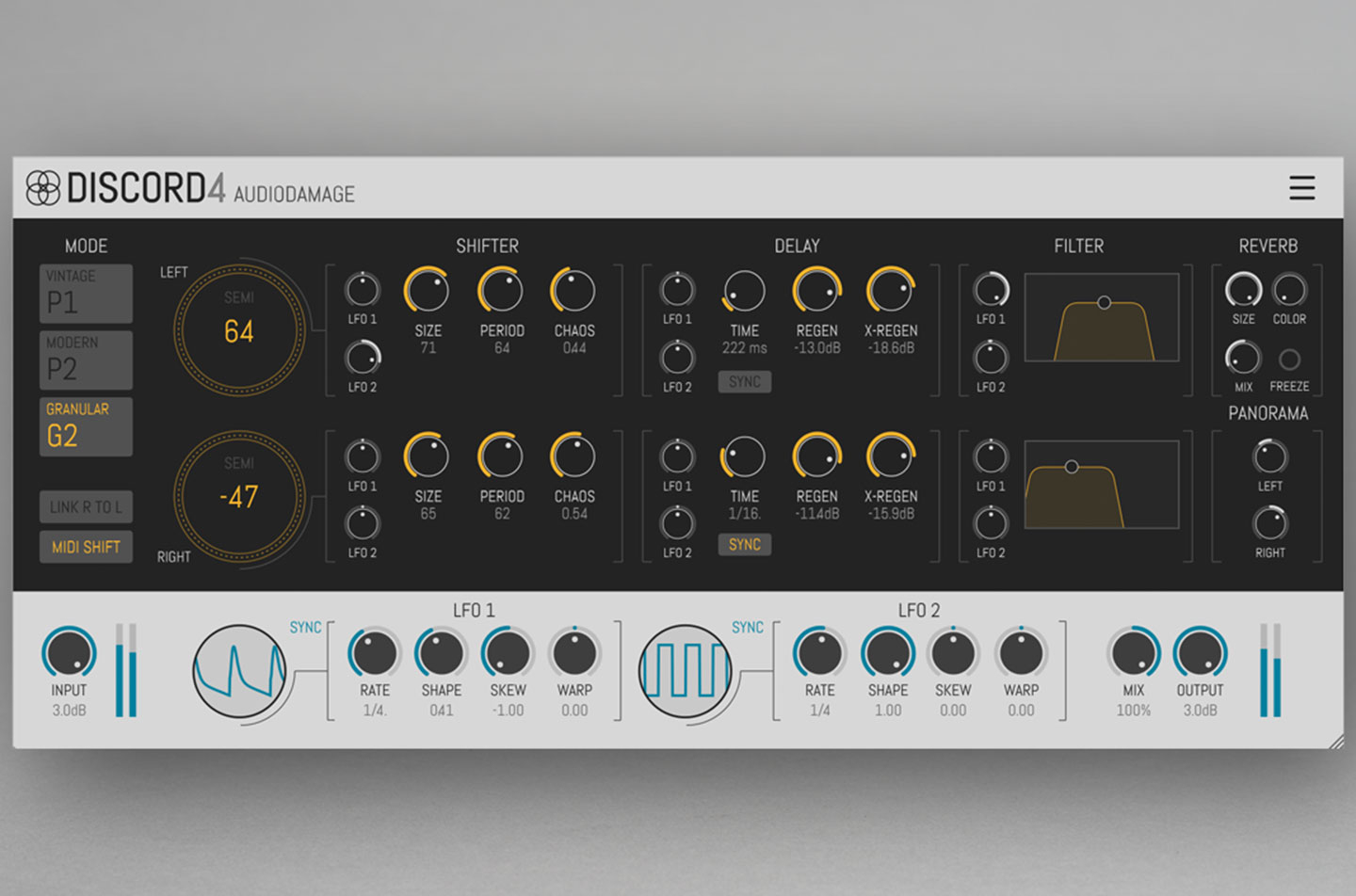- Discord from Audio Damage began life in 2004 as a recreation of the venerated Eventide H910 Harmonizer. It's evolved into a multi-effect plug-in with its own unique sound profile, though the last version, Discord3, came out in 2010. Eight years seems like an unusually long stretch between releases, but there's a good reason for the gap. Audio Damage took a hiatus from software development in favour of designing and engineering their own set of Eurorack modules. But they've apparently rekindled their love for software, and many of their classic plug-ins are now being revamped. This process always includes a fresh UI redesign to support modern hi-res displays and, in cases like Discord4's, functionality enhancements as well. Audio Damage offers these new versions at a big discount to current owners and has often released iOS AUv3 versions in tandem, providing a great way to try before you buy at a much lower price point.
The brains behind Audio Damage's visual design, Chris Randall, has explained his method for redesigning the UIs of their latest plug-ins. It involves using math and drawing commands rather than static images when rendering the visual elements, creating what he calls a procedural UI. In a world where display resolutions can vary wildly, procedural UIs manage better than traditional designs. Discord4 is a great example. Clicking on the bottom-right corner of the plug-in lets you resize the UI freely, rather than being limited to a choice of sizes, or worse, a single fixed resolution.
Discord4's design feels clean and modern. It's a definite step up from the previous version, which, while visually intriguing, was easy to get lost in. This is aided by a colour scheme that clearly differentiates the darker audio processing section from the lighter modulation and mixing controls. The signal flows from left to right, beginning with the pitch shifters and moving into the delay and filter sections before ending up at a pair of new components: reverb and panorama. Adding reverb to the feedback path was a great decision as it greatly expands the sound design potential. There are knobs to tailor the size, colour and dry/wet mix of the reverb as well as a freeze button, which enables infinite sustain of the reverb's current sound. The new panorama controls, on the other hand, are a more utilitarian affair. Here you can control stereo width by independently panning the left and right signal chains, swapping them or even centering both to achieve mono output.
At first glance, the pitch shifters in Discord4 seem unchanged, but the UI hints that something's different: the mode named "Granular G2" replaces its predecessor, "Granular GR." A look at the manual shows that the Granular engine has indeed been tweaked for "overall improvements to the sound quality and a more useful Chaos control." I compared Discord4 to the older version and found the original granular engine to be a bit more forgiving. But if you dial in the correct buffer settings, the new algorithm did seem to perform better at wider pitch-shift ranges. More importantly, the Chaos knob really is more useful. It introduces less dramatic changes to the pitch than the previous algorithms, which could quickly spiral out of control even at low levels.
The last major change is in the modulation section. Discord3 had an LFO dedicated to each channel with four waveshape choices: pulse, sine, saw and random. These could be applied to the amount of pitch shifting, the delay time and the filter frequency amount. Discord4 keeps the two LFO paradigms and the same modulation destinations but offers a bit more flexibility by allowing you to assign varying levels of each LFO to both the left and right channel parameters. The LFOs are further improved with skew and warp controls and a visual display showing the current shape of the waveform. There's also a variable shape parameter, which fades smoothly between sine, triangle and square wave shapes. There's no doubt that these new "flexible LFOs," as Audio Damage calls them, generate more waveshapes than previous incarnations. But one conspicuous gap exists: a random waveshape. In this type of plug-in, having a random modulation source is useful, and its removal is confusing, especially since Discord3 had some great presets that relied on that feature.
There's not much else to complain about with Discord4. Audio Damage kept the bones of a great product largely intact, enhanced it with some nice new features and polished it with a new, resizable UI, which is outstanding. If you're dabbling in iOS music production, the $5.99 AUv3 version on the App Store is a no-brainer, even if it lacks the MIDI pitch shifting and left-right channel link buttons of the desktop version. Even considering the full price of admission for the desktop version, having this level of sound design potential at your fingertips is well worth the money.
Ratings:
Cost: 4.8
Versatility: 4.5
Ease of use: 4.4
Sound: 4.4
